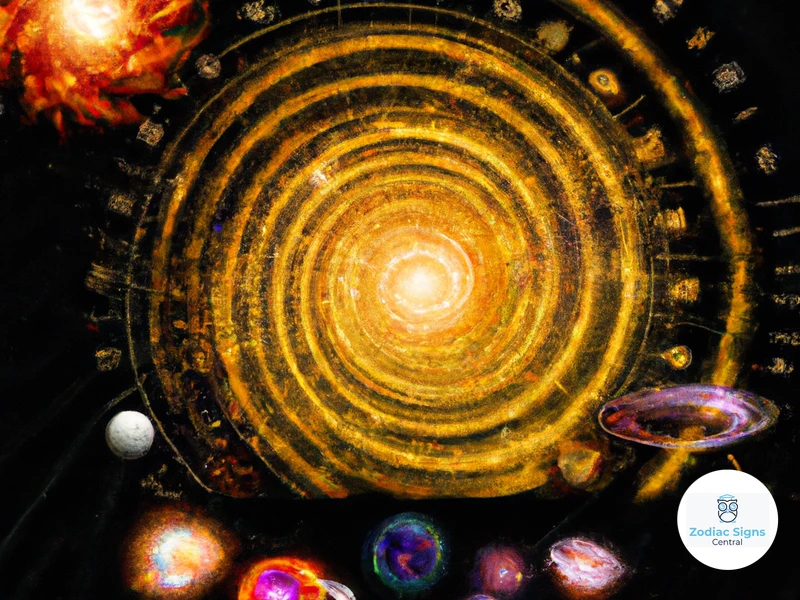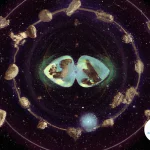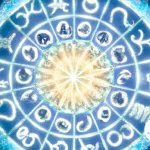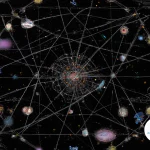Are you curious about the mysterious forces that shape your personality, relationships, and career choices? Look no further than your astrological chart and the planetary aspects encoded within it. These celestial connections between the planets in your chart provide valuable insights into your intrinsic nature and the potential opportunities and challenges that lie ahead. In this article, we will embark on a journey to decode the planetary aspects that influence your life, step-by-step. Whether you’re a seasoned astrology aficionado or just starting to explore the wonders of the cosmos, this guide will equip you with the knowledge to unravel the secrets hidden in your astrological chart and harness the power of planetary aspects to navigate through life with clarity and purpose.
What are Planetary Aspects?

Planetary aspects refer to the angular relationships between the planets in an astrological chart. They represent the dynamic connections and interactions between different celestial bodies within the chart. These aspects have a significant influence on an individual’s personality traits, behavior, and life experiences.
To understand planetary aspects better, let’s consider an example. Imagine your astrological chart shows that the Sun is in a conjunction aspect with the Moon. This means that the Sun and Moon are in close proximity to each other, creating a powerful union of energies. This aspect often represents a harmonious blend of your conscious self (Sun) and emotions and instincts (Moon). It indicates a strong sense of self-awareness and emotional intelligence which can greatly impact your relationships and overall emotional well-being.
Planetary aspects can be categorized into different types. Some of the most common planetary aspects include:
1. Conjunction:
– Occurs when two planets are in close proximity to each other, usually within 0-10 degrees.
– This aspect signifies a merging and amplification of the energies of the planets involved.
2. Opposition:
– Occurs when two planets are approximately 180 degrees apart.
– Represents a polarity or tension between the energies of the planets involved.
3. Trine:
– Occurs when two planets are approximately 120 degrees apart.
– Signifies a harmonious flow of energy and ease of expression between the planets involved.
4. Square:
– Occurs when two planets are approximately 90 degrees apart.
– Represents a challenge or conflict between the energies of the planets involved.
5. Sextile:
– Occurs when two planets are approximately 60 degrees apart.
– Indicates opportunities for growth, collaboration, and positive change.
6. Quincunx:
– Occurs when two planets are approximately 150 degrees apart.
– Represents a subtle tension or adjustment required between the energies of the planets involved.
Each type of aspect brings its own unique qualities and influences to the individual’s chart. Understanding the significance of these aspects can provide valuable insights into your personality, relationships, and life experiences. By exploring the planetary aspects in your chart, you can gain a deeper understanding of yourself and your potential for personal growth and fulfillment.
Types of Planetary Aspects
Planetary aspects in astrology come in various forms, each with its own unique energy and influence. These aspects provide a deeper understanding of the connections and dynamics between planets in an individual’s astrological chart. Some of the key types of planetary aspects include conjunction, opposition, trine, square, sextile, and quincunx. A conjunction occurs when two planets are close together, amplifying their energies and creating a powerful union. Opposition represents a polarity or tension between two planets that are approximately 180 degrees apart. Trine indicates a harmonious flow and ease of expression between planets that are approximately 120 degrees apart. Square signifies a challenge or conflict between planets that are approximately 90 degrees apart. Sextile brings opportunities for growth and positive change between planets that are approximately 60 degrees apart. Quincunx represents a subtle tension or adjustment required between planets approximately 150 degrees apart. Each type of aspect contributes to the complexity and richness of an individual’s astrological chart, offering valuable insights into their personality, relationships, and life experiences. Understanding these aspects can help individuals navigate their journey with clarity and purpose.
1. Conjunction
A conjunction is a powerful and significant planetary aspect that occurs when two planets are in close proximity, usually within 0-10 degrees of each other. It represents a merging and amplification of the energies of the planets involved, creating a strong influence on the individual’s personality and life experiences.
When two planets are in conjunction, their energies combine and work together, enhancing each other’s qualities. This can manifest in various ways depending on the specific planets involved. For example, a conjunction between the Sun and Moon indicates a strong integration of personal identity (Sun) and emotions (Moon), resulting in a person who is self-aware, emotionally attuned, and in touch with their inner needs and desires. This aspect is often associated with a deep sense of authenticity and a clear understanding of one’s emotional landscape.
Conjunctions can also occur between other planets, such as Venus and Mars. This conjunction brings together the energies of love (Venus) and passion (Mars), creating a dynamic and magnetic force in relationships and personal expression. Individuals with this aspect may have a passionate approach to love and may embody a strong sense of desire and creativity in their romantic pursuits.
It’s important to note that the specific interpretation of a conjunction depends on the planets involved and the overall context of the individual’s chart. For a more accurate and personalized understanding of the effects of a conjunction, it is advisable to consult with a professional astrologer who can analyze your chart in detail and provide insights tailored to your unique astrological profile. Understanding the power of conjunctions can offer valuable guidance on how to navigate life’s challenges and leverage your strengths for personal growth and fulfillment.
2. Opposition
The opposition aspect is a powerful and dynamic connection between two planets in an astrological chart. It occurs when two planets are opposite each other at approximately 180 degrees apart. This aspect creates a polarity or tension between the energies of the planets involved, often representing a push and pull effect in various areas of life.
When two planets are in opposition, they highlight contrasting qualities and values within an individual’s personality. This can result in inner conflicts or external challenges that need to be navigated and balanced. The opposition aspect brings awareness to areas of life where compromise, integration, and finding a middle ground are necessary.
For example, let’s consider the opposition between the Moon and Saturn. The Moon represents emotions, instincts, and nurturing qualities, while Saturn represents structure, responsibility, and limitations. With this opposition, there can be a conflict between the need for emotional security and the pressures of societal expectations or responsibilities. It may manifest as an internal struggle to express emotions openly or a tendency to suppress emotions due to a fear of vulnerability. However, with conscious awareness and understanding, this aspect can also lead to a balance between emotional sensitivity and practicality.
Here are key characteristics of the opposition aspect:
– Tension and polarity: The opposition aspect creates tension and polarity between the energies of the two planets involved. This can result in a constant push and pull effect, requiring a conscious effort to find balance and integration.
– Awareness of contrasting qualities: The opposition aspect highlights the contrasting qualities and values represented by the planets involved. It brings attention to areas of life where compromise and harmony are necessary.
– External projection: The opposition aspect can often manifest as external conflicts or challenges with others who embody the qualities represented by the opposing planet.
– Potential for growth and integration: While the opposition aspect may present challenges, it also offers an opportunity for growth and integration. By recognizing and acknowledging the opposing energies, individuals can find ways to navigate the tension and achieve a greater sense of balance.
Understanding the opposition aspect in your astrological chart can provide valuable insights into your areas of tension, potential conflicts, and opportunities for personal growth. Recognizing and working with the energies represented by this aspect can lead to greater self-awareness, harmony, and the ability to navigate life’s challenges with grace and understanding. If you’d like to explore further, you can learn about the significance of the rising sign in horoscopes at /rising-sign-significance-in-horoscopes/.
3. Trine
The trine aspect is one of the most favorable and harmonious planetary aspects in astrology. It occurs when two planets are approximately 120 degrees apart. This aspect creates a flow of positive energy and ease of expression between the planets involved.
When two planets are in a trine aspect, they work together harmoniously, amplifying each other’s strengths and capabilities. This aspect is often associated with opportunities, abundance, and natural talents. It indicates a sense of ease and cooperation, allowing the energies of the planets to blend effortlessly.
Those with prominent trine aspects in their astrological chart often possess a natural aptitude and innate abilities in the areas represented by the planets involved. For example, a trine between Venus and Neptune may indicate a person with a natural talent for artistic expression or a deep sensitivity to beauty and emotions. Such individuals may find it easier to cultivate and express their creativity, enjoy harmonious relationships, and appreciate the finer aspects of life.
The trine aspect encourages the free flow of energy and supports the individual in manifesting their desires and achieving their goals. It brings a sense of ease, grace, and positive outcomes in the areas related to the planets involved. However, it is important to note that while trines are generally considered beneficial, they can also potentially lead to complacency or a lack of motivation if one relies solely on the ease of the aspect without taking proactive steps towards growth and development.
In order to fully harness the potential of a trine aspect, it is important to explore the specific qualities and characteristics of the planets involved. Understanding their energies and how they connect can provide valuable insights into how to best utilize this harmonious aspect in your life. Exploring the impact of the trine aspect on emotional intelligence and love relationships can further deepen your understanding of its influence in these areas. (You can learn more about nurturing emotional intelligence based on your astrological profile by clicking here or explore the role of Venus in love relationships by clicking here.) By embracing the opportunities presented by the trine aspect, you can cultivate your innate talents, find fulfillment, and navigate through life with greater ease and harmony.
4. Square
In astrology, a square aspect occurs when two planets are approximately 90 degrees apart in the astrological chart. This aspect creates a dynamic and challenging energy between the planets involved. The square aspect is often seen as a source of tension and conflict, but it also offers opportunities for growth, transformation, and self-improvement.
Here are some key characteristics and influences of the square aspect:
1. Inner Conflict:
– The square aspect reflects an inner conflict or tension within an individual’s psyche.
– It represents areas where different desires, needs, or motivations may clash, creating a sense of imbalance or frustration.
– This internal conflict can manifest in various aspects of life, such as relationships, career choices, or personal beliefs.
2. Catalyst for Change:
– Despite the challenges it presents, the square aspect can serve as a catalyst for growth and transformation.
– The tension created by the square aspect often motivates individuals to find creative solutions and overcome obstacles.
– It encourages personal development and the breaking of old patterns or limitations.
3. Energy and Drive:
– The square aspect can bring a high level of energy and drive to the planets involved.
– It fuels ambition, determination, and a desire to overcome challenges.
– Individuals with prominent square aspects in their charts often possess a strong work ethic and a tenacious spirit.
4. Struggle and Frustration:
– The square aspect can also signify periods of struggle, frustration, or resistance in various areas of life.
– It may indicate obstacles that need to be overcome or lessons that need to be learned.
– The challenges posed by the square aspect often lead to personal growth and the development of resilience and inner strength.
5. Resolution and Integration:
– The ultimate goal of the square aspect is to find resolution and integration between the conflicting energies involved.
– Individuals with square aspects in their charts are encouraged to find balance, harmony, and a constructive outlet for the energies at play.
– This process of integration can lead to personal empowerment, self-awareness, and a greater understanding of one’s own strengths and weaknesses.
Understanding the influence of the square aspect in your astrological chart can provide valuable insights into the areas where you may encounter challenges and conflicts, as well as the opportunities for growth and transformation that lie within them. By embracing the lessons and working towards resolution, you can harness the energy of the square aspect to achieve personal development and create a more fulfilling life journey.
5. Sextile
The sextile is a harmonious aspect that occurs when two planets are approximately 60 degrees apart in an astrological chart. This aspect brings a sense of ease, cooperation, and opportunity for growth between the planets involved. Here are some key points to understand about the sextile aspect:
1. Harmonious Flow: The sextile aspect creates a natural flow of energy between the planets. It encourages cooperation, synergy, and positive collaboration. The energies of the planets involved blend well together, allowing for smooth and balanced expression.
2. Opportunities for Growth: The sextile aspect is often seen as an aspect of opportunity and potential. It can bring favorable circumstances, helpful connections, and openings for personal and professional growth. It indicates that the planets involved can work together harmoniously to achieve desired outcomes.
3. Creative and Productive Energy: The sextile aspect can bring a boost of creative and productive energy. It enhances the ability to think creatively, find innovative solutions, and take advantage of opportunities. This aspect is known for its ability to support positive and constructive actions.
4. Balance and Integration: The sextile aspect fosters a sense of balance and integration between the energies of the planets involved. It encourages the integration of different aspects of one’s personality, allowing for a harmonious expression of diverse qualities and talents.
5. Moderate Influence: While the sextile aspect brings positive energy and opportunities, it is not as powerful or intense as some other aspects. It is often seen as a gentle influence that can be beneficial if consciously utilized but may not bring dramatic changes on its own.
The sextile aspect in astrology represents harmonious flow, opportunities for growth, creative energy, and balance. Understanding the significance of the sextile aspect in your astrological chart can help you make the most of the favorable energies it brings and seize opportunities for personal and professional advancement.
6. Quincunx
The Quincunx aspect, also known as the Inconjunct aspect, occurs when two planets are approximately 150 degrees apart in the astrological chart. It represents a subtle and challenging energy between the planets involved. Quincunx aspects bring a sense of discord or tension that requires careful adjustment and adaptation.
When two planets form a Quincunx aspect, their energies do not naturally integrate or understand each other. They operate in different elements and modalities, creating a sense of unease or discomfort. The resulting tension can lead to internal conflicts and a feeling of being caught between two worlds.
The Quincunx aspect requires conscious effort and flexibility to navigate effectively. It challenges individuals to find creative solutions and make necessary adjustments in order to reconcile the conflicting energies. This aspect often brings a sense of constant change and a need for adaptability in the areas of life represented by the planets involved.
The Quincunx aspect is associated with a sense of incongruity and a need to find balance between seemingly unrelated energies. It can manifest as a struggle to integrate different aspects of one’s personality or conflicting desires and values. This aspect often prompts individuals to seek personal growth and harmony by finding innovative ways to bridge the gap between diverse elements of their lives.
In interpreting the Quincunx aspect, it’s important to consider the specific planets involved and the signs they are in. These factors provide additional insights into the specific challenges and adjustments required. While the Quincunx aspect may pose challenges, it also presents opportunities for personal development and growth. By embracing the need for flexibility and adaptation, individuals can harness the transformative potential this aspect offers to enhance self-awareness and personal evolution.
Interpreting Planetary Aspects
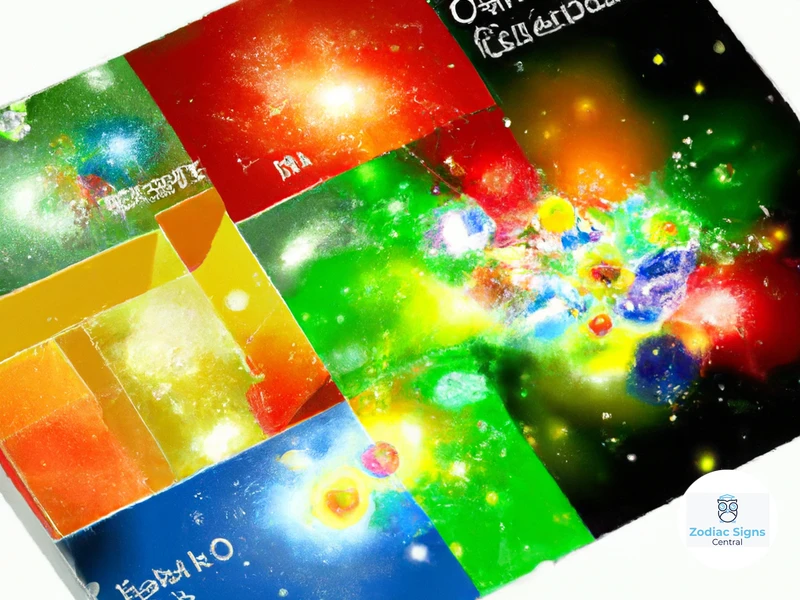
Interpreting planetary aspects is a crucial step in understanding the deeper meaning and implications of your astrological chart. There are three main aspects to consider: major planetary aspects, minor planetary aspects, and aspect patterns. Major planetary aspects, such as the conjunction, opposition, trine, square, sextile, and quincunx, have a significant impact on your personality and life experiences. These aspects highlight the themes and dynamics in your life, shaping your behavior, relationships, and overall life path. Minor planetary aspects, on the other hand, provide additional nuances and details to the major aspects, adding depth and complexity to your chart interpretation. Lastly, aspect patterns, such as stelliums or grand trines, occur when multiple planets form a specific geometric pattern in the chart, further influencing your strengths, challenges, and areas of potential growth. By analyzing and synthesizing these various aspects, you can unravel the intricate tapestry of your astrological chart and gain valuable insights into your unique astrological makeup.
1. Major Planetary Aspects
Major planetary aspects hold a significant influence in an astrological chart, shaping the overall dynamics and themes of an individual’s life. These aspects involve the major celestial bodies such as the Sun, Moon, Mercury, Venus, Mars, Jupiter, Saturn, Uranus, Neptune, and Pluto. Understanding these major planetary aspects can provide deeper insights into the core aspects of one’s personality and life experiences.
One of the key major planetary aspects is the conjunction, which occurs when two planets are in close proximity to each other, sharing the same degree or very close degrees. A conjunction brings the energies of the planets together, amplifying their effects and creating a powerful fusion. For example, a conjunction between the Sun and Venus can indicate a charismatic and likable personality, with a strong emphasis on harmonious relationships and creative expression.
Another important major aspect is the opposition, representing a polarity or tension between two planets that are approximately 180 degrees apart. An opposition often reflects a balance of energies that need to be achieved. For instance, an opposition between Mars and Saturn might result in a constant push-pull between taking action and exercising caution, leading to a need for finding a healthy balance between assertiveness and restraint.
The trine is yet another major planetary aspect, occurring when two planets are approximately 120 degrees apart. Trines typically denote a harmonious flow of energy and a natural affinity between the planets involved. For instance, a trine between the Moon and Neptune may suggest a deep and intuitive understanding of emotions, enhanced imagination, and empathy.
The square is a major aspect that signifies a challenge or conflict between two planets that are approximately 90 degrees apart. Squares often represent areas of tension and growth, urging individuals to address and resolve any conflicts between different aspects of their lives. An example of a square is the dynamic between Jupiter and Pluto, which can present a struggle between expansion and power, requiring individuals to find a balance between ambition and maintaining integrity.
These major planetary aspects serve as key pillars in astrological interpretation, and their influence shapes the overall themes and lessons in an individual’s life. By understanding these aspects, one can gain valuable insights into their core nature, strengths, challenges, and potentials. It is important to analyze these aspects in conjunction with other factors in the chart to form a comprehensive understanding of an individual’s astrological makeup.
2. Minor Planetary Aspects
Minor planetary aspects, sometimes referred to as lesser aspects, encompass a variety of angular relationships between planets that are less commonly considered in astrological interpretations. While major aspects like conjunctions, oppositions, trines, squares, sextiles, and quincunxes often take center stage, it’s important not to overlook the subtler influences of minor planetary aspects. These aspects can provide additional layers of insight into an individual’s chart and further enrich the overall understanding of their astrological profile.
Here are a few examples of minor planetary aspects:
1. Semi-Sextile:
– Occurs when two planets are 30° apart, creating a subtle connection.
– Represents a gentle and supportive link between the energies of the planets involved. It often signifies opportunities for growth and cooperation.
2. Semi-Square:
– Occurs when two planets are 45° apart, indicating a challenging and dynamic connection.
– Reflects a sense of urgency or tension, demanding attention and action to address the conflicting energies between the planets involved.
3. Sesquiquadrate:
– Occurs when two planets are approximately 135° apart.
– Signifies a sense of restlessness and a need for adjustment or compromise between the energies of the planets involved.
4. Quintile:
– Occurs when two planets are 72° apart.
– Represents a harmonious and creative connection between the energies of the planets involved. It often signifies unique talents and artistic abilities.
While minor aspects may not be as overtly significant as major aspects, they can add nuance and depth to the interpretation of an astrological chart. These aspects provide further insights into the interplay of planetary energies and can illuminate specific areas of focus or challenges in an individual’s life. It is essential to consider all types of planetary aspects when analyzing a chart to gain a comprehensive understanding of an individual’s astrological makeup and tap into the full potential of their cosmic blueprint.
3. Aspect Patterns
3. Aspect Patterns are configurations formed by multiple planetary aspects within an astrological chart. These patterns add another layer of complexity and significance to the interpretation of planetary aspects. They provide additional depth and insight into the individual’s personality and life experiences.
There are several common aspect patterns that astrologers analyze:
1. Grand Trine:
– A grand trine occurs when three planets form an equilateral triangle within the chart, connecting in trine aspects.
– This pattern symbolizes harmony, ease, and natural talents in the areas represented by the planets involved.
– Individuals with a grand trine may possess innate gifts and abilities in these areas but can also struggle with a sense of complacency if they don’t actively harness their potential.
2. T-Square:
– A T-square occurs when three planets form a right-angle triangle within the chart, connecting in square and opposition aspects.
– This pattern represents tension, challenges, and a drive for growth and transformation.
– Individuals with a T-square often encounter obstacles and conflicts in the areas represented by the planets involved. However, they also possess the potential to overcome these challenges and achieve significant personal and spiritual growth.
3. Yod:
– A Yod, also known as the “Finger of Fate,” occurs when two planets form an isosceles triangle with another planet at the apex, creating a sextile and two inconjunct aspects.
– This pattern signifies a powerful and fated calling or mission in the individual’s life.
– Individuals with a Yod may experience a sense of pressure or a feeling of being driven toward a specific purpose or destiny. They often need to navigate unique challenges and make important choices to fulfill their higher purpose.
4. Mystic Rectangle:
– The mystic rectangle occurs when two sets of planets form opposition aspects, connected by harmonious trine aspects.
– This pattern combines the supportive energies of trine aspects with the growth potential of opposition aspects.
– Individuals with a mystic rectangle often possess a balanced and harmonious approach to life. They have the ability to integrate opposing forces and find creative, balanced solutions to challenges.
Analyzing aspect patterns in a chart provides a holistic understanding of the interplay between different energies and areas of life. These patterns offer valuable insights into the individual’s life purpose, challenges, strengths, and potential areas of growth. By identifying and working with aspect patterns in your chart, you can gain a deeper understanding of yourself and make more informed decisions to navigate life’s twists and turns with greater clarity and purpose.
Decoding Planetary Aspects in Your Chart
Decoding the planetary aspects in your astrological chart is an essential step in understanding the intricate web of energies that shape your life. By analyzing the specific aspects between the planets in your chart, you can gain deeper insights into various aspects of your persona and life experiences. Here’s how you can decode planetary aspects in your chart:
1. Identify the aspects: Start by identifying the planetary aspects present in your chart. Note down the exact degrees and types of aspects between the planets. This information will serve as a foundation for your analysis.
2. Understand the energies: Research and familiarize yourself with the qualities and symbolism associated with each planet involved in the aspect. For example, if there is a conjunction between Mars and Venus, understand the meaning of Mars as the planet of action and aggression, and Venus as the planet of love and relationships.
3. Consider the sign placements: Take into account the zodiac signs in which the planets are positioned. The sign placement adds an additional layer of nuance to the aspect interpretation. For instance, a square aspect between the Moon in Aries and Pluto in Cancer will have different dynamics than the same square aspect with the Moon in Cancer and Pluto in Aries.
4. Analyze the houses: Examine the houses in which the planets are located. The houses represent different areas of life, such as relationships, career, or spirituality. The combination of the aspect and house placement provides insights into how the energies manifest in specific areas of your life.
5. Pay attention to the orbs: Consider the orb of influence for each aspect. The orb is the allowable margin of degrees within which the aspect is still considered significant. Generally, the tighter the orb, the stronger the influence of the aspect.
6. Look for patterns and themes: Analyze the overall patterns and themes that emerge from your planetary aspects. Are there specific aspects that recur frequently? Do you notice a dominant element or mode in your aspect configuration? These patterns can provide valuable information about your strengths, challenges, and potential areas of growth.
By decoding the planetary aspects in your chart, you can gain profound insights into your personality traits, relationships, and life circumstances. Remember, the interpretation of aspects requires a holistic understanding of the entire chart, taking into account the interplay of different factors. If you’re new to astrology or find it overwhelming, seeking guidance from a professional astrologer can provide you with a more comprehensive understanding of how planetary aspects shape your unique individuality.
Tips for Analyzing Planetary Aspects

Analyzing planetary aspects in your astrological chart can seem like a complex task, but with a few tips and strategies, you can navigate through this intricate landscape with more clarity and insight. Here are some valuable tips for successfully analyzing planetary aspects:
1. Understand the nature of each planet: Familiarize yourself with the basic characteristics and energies of each planet involved in the aspect. For example, Mercury represents communication and intellect, while Venus symbolizes love and harmony. Knowing these fundamental qualities will help you interpret the impact of the aspects more effectively.
2. Consider the zodiac signs involved: The zodiac signs in which the planets are positioned provide additional context and flavor to the aspect. Each sign has its unique attributes and qualities that can modify the expression of the aspect. Take note of the elemental nature (fire, earth, air, or water) and the mode (cardinal, fixed, or mutable) of each sign. This information will deepen your understanding of how the aspect manifests.
3. Pay attention to the house placement: The house position of the planets involved in the aspect is vital for understanding the area of life where the aspect’s influence is most prominent. Each house represents different aspects of our lives, such as career, relationships, and spirituality. Analyzing the house placement of the aspect will provide insights into the specific area of life that will be affected.
4. Examine the orb of the aspect: The orb refers to the degree of allowance or tolerance within which an aspect is considered valid. A larger orb allows for a wider range of degrees between planets, indicating a weaker influence. A tighter orb signifies a stronger and more pronounced impact. Take into account the orbs while assessing the strength and significance of the aspect.
5. Consider the overall chart dynamics: Interpreting a single aspect in isolation may provide valuable insights, but it’s also essential to examine the aspect in the context of the entire chart. Look for patterns, themes, and other aspect interactions that may influence the expression of the aspect you are analyzing. This holistic approach will yield a more comprehensive understanding of the chart as a whole.
6. Seek guidance from a professional astrologer: If you find the process overwhelming or if you want a more in-depth analysis of your planetary aspects, consulting with a professional astrologer can provide valuable guidance. An astrologer can offer personalized insights, interpretations, and recommendations based on your unique chart and planetary aspects.
By applying these tips, you can delve deeper into the meanings and effects of planetary aspects in your astrological chart. Remember, it takes time and practice to develop your skills in analyzing aspects accurately. Embrace the process and explore the vast universe of planetary influences within your chart.
Common Planetary Aspect Combinations
Common planetary aspect combinations offer intriguing insights into the various dynamics at play in an individual’s astrological chart. One such combination is the Sun-Moon conjunction, where the luminaries come together in close proximity. This alignment represents a fusion of the core being (Sun) and the emotional landscape (Moon), leading to a strong sense of self-awareness and emotional intelligence. Additionally, the Mars-Saturn opposition reflects a tension between the assertive and action-oriented qualities of Mars and the disciplined and structured nature of Saturn. This aspect often implies a need for balancing ambition with patience and perseverance. Another noteworthy combination is the Jupiter-Pluto square, which signifies an interplay between expansion, optimism, and transformation. This aspect indicates a powerful drive for growth and an inherent ability to transform obstacles into opportunities. Exploring these common planetary aspect combinations can provide valuable insights into an individual’s strengths, challenges, and the potential for growth in different areas of life.
1. Sun-Moon Conjunction
The Sun-Moon conjunction is one of the most significant planetary aspects in astrology. When the Sun and Moon are in conjunction, it means that they are in the same zodiac sign and closely aligned. This powerful aspect represents a blending of the core essence of your personality (Sun) and your emotional nature and instincts (Moon). Here are some key points to understand about the Sun-Moon conjunction:
– Alignment of Consciousness and Emotion: The Sun-Moon conjunction symbolizes a harmonious integration of your conscious self and emotional needs. It indicates that your actions and desires align with your emotional state, creating a strong sense of self-awareness and emotional intelligence.
– Emotional Stability and Authenticity: With the Sun and Moon in conjunction, you are likely to exude authenticity and emotional stability. Your emotions and sense of self are closely intertwined, allowing you to express your true feelings and navigate life with a strong sense of purpose and identity.
– Inner Harmony and Self-Expression: This aspect fosters a deep sense of inner harmony and self-expression. You have a natural tendency to align your emotions with your actions, enabling you to project a consistent and authentic image to the world.
– Emotional Intelligence and Empathy: The Sun-Moon conjunction often bestows a high level of emotional intelligence and empathy. You have a keen understanding of your own emotions as well as the emotions of others, making you highly intuitive and compassionate in your interactions.
– Emotional Depth and Power: Individuals with a Sun-Moon conjunction possess a profound emotional depth and intensity. Your emotional experiences run deep, and you may be more prone to intense emotional reactions to various situations in life.
It’s important to note that the house placement and aspects of the Sun-Moon conjunction within the chart will provide further insights into the specific areas of life where this aspect has a significant influence. Understanding the dynamics and nuances of the Sun-Moon conjunction in your chart can help you embrace your authentic self, cultivate emotional intelligence, and foster harmonious relationships.
2. Mars-Saturn Opposition
The Mars-Saturn opposition is a significant planetary aspect that occurs when Mars and Saturn are positioned approximately 180 degrees apart in an individual’s astrological chart. This opposition represents a clash or tension between the assertive, energetic qualities associated with Mars and the restrictive, disciplined qualities associated with Saturn.
With this aspect, individuals may struggle with a conflict between their desire for action and their need to be cautious and responsible. It can create a push-pull dynamic within an individual, where they may feel frustrated by obstacles or limitations that hinder their progress. The Mars-Saturn opposition can also indicate a strong sense of ambition and determination, driving individuals to work hard towards their goals, but it can also bring challenges that require patience and persistence.
Those with a Mars-Saturn opposition may face difficulties in expressing their assertiveness or may experience delays and setbacks in their endeavors. It is important for individuals with this aspect to find a balance between their desire for action and the need to be patient and methodical in their approach. Embracing discipline and structure can help channel the energy of Mars in a productive way.
This aspect can also manifest as a tendency towards perfectionism and self-criticism. Individuals may feel a constant pressure to succeed and may be driven to work harder than most. While this can lead to great achievements, it is crucial for individuals to be mindful of their own well-being and not succumb to burnout or excessive self-imposed stress.
The Mars-Saturn opposition can also provide individuals with determination and resilience in the face of adversity. It fosters a tenacious spirit to overcome challenges and accomplish tasks with unwavering focus. With conscious awareness and balanced self-discipline, individuals can learn to harness the constructive aspects of this opposition and develop a strong work ethic and the ability to handle responsibility effectively.
Navigating the Mars-Saturn opposition requires individuals to cultivate patience, discipline, and strategic thinking. Learning to work within limitations, setting realistic goals, and embracing perseverance can lead to long-term success and personal growth. By recognizing and understanding the challenges and opportunities presented by this aspect, individuals can learn to navigate its complexities and harness its transformative power.
3. Jupiter-Pluto Square
The Jupiter-Pluto square is a powerful and dynamic aspect that occurs when Jupiter and Pluto are approximately 90 degrees apart in an astrological chart. This aspect brings together the expansive and optimistic energy of Jupiter with the transformative and intense energy of Pluto. Here are some key characteristics and influences associated with the Jupiter-Pluto square:
1. Ambition and Power Struggles:
– The Jupiter-Pluto square often signifies a strong drive for success and ambition.
– Individuals with this aspect may have a deep desire for power and influence in their chosen field.
– However, they may also encounter power struggles or conflicts as they navigate their path to success.
2. Growth through Transformation:
– The Jupiter-Pluto square represents a transformative energy that can lead to personal growth and evolution.
– Individuals with this aspect may experience significant shifts and transformations in their lives, both internally and externally.
– This aspect encourages them to embrace change and to harness their personal power to overcome obstacles and achieve their goals.
3. Intense Relationships and Connections:
– The Jupiter-Pluto square can bring intense and profound relationships into one’s life.
– These relationships may be marked by power dynamics, intensity, and a strong emotional bond.
– Individuals with this aspect may attract people who challenge them to grow and evolve personally and spiritually.
4. Financial Opportunities and Challenges:
– The Jupiter-Pluto square can also influence an individual’s financial circumstances.
– It may present both opportunities for significant financial growth and challenges that need to be overcome.
– Individuals with this aspect may need to learn how to balance their desire for material abundance with ethical considerations.
5. Transformation of Beliefs and Philosophies:
– The Jupiter-Pluto square can inspire a profound shift in an individual’s belief systems and philosophies.
– It encourages them to question and challenge existing belief structures, seeking deeper truths and understanding.
– This aspect invites individuals to embrace a more transformative and expansive perspective on life.
Remember, the influence of the Jupiter-Pluto square will vary depending on the other aspects and placements in an individual’s chart. It is essential to consider the overall context and dynamics of the chart to gain a comprehensive understanding of how this aspect influences one’s life. Consulting with an experienced astrologer can provide further insights and guidance on navigating the potentials and challenges of the Jupiter-Pluto square.
Planetary Aspects and Personality Traits
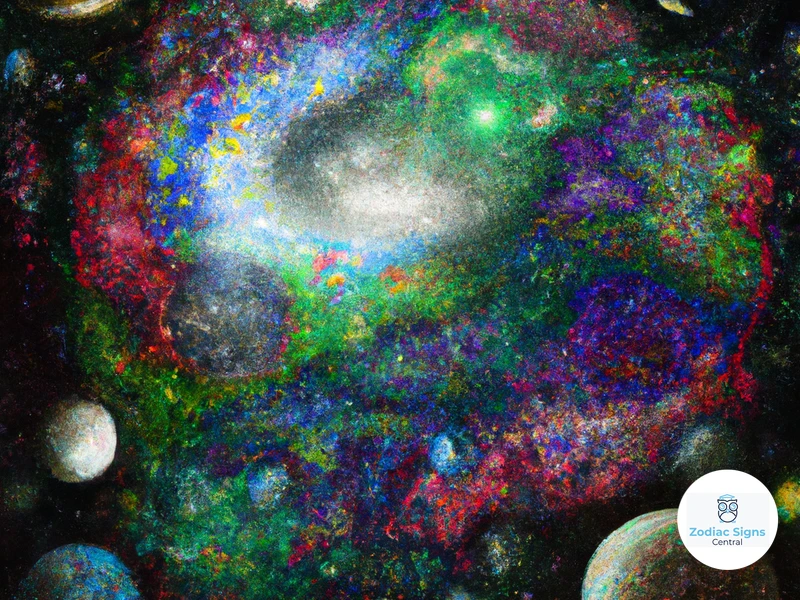
Planetary aspects play a crucial role in shaping an individual’s personality traits. Each aspect brings its own unique energy and qualities, which combine to create a complex tapestry of characteristics and behaviors.
Here are some examples of how different planetary aspects can influence personality traits:
1. Sun-Moon Conjunction:
– This aspect represents a harmonious blend between the conscious self (Sun) and emotions and instincts (Moon).
– Individuals with this aspect often have a strong sense of self-awareness and emotional intelligence.
– They possess a natural ability to navigate their emotions and express themselves authentically.
2. Mars-Pluto Opposition:
– This aspect creates a tension between the aggressive and assertive qualities of Mars and the transformative power of Pluto.
– It can contribute to a strong desire for control and the drive to achieve personal goals at all costs.
– Individuals with this aspect may possess a determined and intense nature, displaying perseverance and a deep sense of ambition.
3. Venus-Uranus Trine:
– This aspect signifies a harmonious flow of energy between the planet of love and beauty (Venus) and the planet of innovation and freedom (Uranus).
– Individuals with this aspect often have a unique and unconventional approach to relationships and creativity.
– They may thrive in unconventional partnerships and express their creativity in unconventional ways.
4. Jupiter-Saturn Square:
– This aspect creates tension and challenges between the expansive and optimistic nature of Jupiter and the disciplined and structured qualities of Saturn.
– Individuals with this aspect may struggle to find a balance between taking risks and maintaining stability.
– They may possess a strong work ethic and desire for success, but may also face obstacles or limitations along their journey.
5. Mercury-Neptune Sextile:
– This aspect represents a harmonious connection between the planet of communication and intellect (Mercury) and the planet of imagination and spirituality (Neptune).
– Individuals with this aspect often have a natural ability to communicate and express themselves creatively.
– They may possess a deep intuition and be drawn to artistic pursuits or spiritual exploration.
It is important to remember that no single aspect defines an individual’s entire personality. The combination of multiple aspects and the overall configuration of the astrological chart create a unique and nuanced personality profile. By understanding the planetary aspects in your chart, you can gain valuable insights into the different facets of your personality, allowing for personal growth and self-awareness.
Impact of Planetary Aspects on Relationships
The impact of planetary aspects on relationships is profound and can provide valuable insights into the dynamics, challenges, and compatibility between individuals. By analyzing the planetary aspects in a relationship chart, astrologers can gain a deeper understanding of the strengths, weaknesses, and potential conflicts that may arise in a partnership.
One of the most significant aspects to consider is the conjunction between Venus and Mars. This aspect represents the merging of feminine (Venus) and masculine (Mars) energies, creating a dynamic blend of passion, attraction, and assertiveness. In a romantic relationship, this aspect indicates a strong physical and emotional connection, as well as a shared drive for passion and desire.
On the other hand, the square aspect between Venus and Saturn can present challenges in relationships. This aspect signifies a tension between the planet of love (Venus) and the planet of structure and responsibility (Saturn). Individuals with this aspect in their relationship chart may experience difficulties in expressing affection, feeling emotionally connected, or committing fully to the partnership. However, with conscious effort and communication, these challenges can be overcome, leading to a more stable and enduring relationship.
Another important aspect to consider is the Moon aspecting the personal planets (Sun, Mercury, Venus, and Mars) in a relationship chart. The Moon represents emotions, nurturing, and the subconscious mind. When it forms a harmonious aspect (such as a trine or sextile) with the personal planets, it enhances emotional understanding, empathy, and emotional responsiveness between partners. This creates a deep emotional bond and emotional support within the relationship.
Additionally, the placement of the outer planets (such as Uranus, Neptune, and Pluto) in relation to personal planets can also greatly impact relationships. For example, a conjunction between Pluto and Venus can denote intense, transformative, and even obsessive patterns of love and desire. On the other hand, a trine between Uranus and Mars can indicate an exciting and unconventional relationship dynamic, with a strong focus on individual freedom and innovation.
It is important to note that the impact of planetary aspects on relationships is not solely determined by the presence of a specific aspect but also influenced by the overall chart, other aspects, and individual characteristics. It is vital to consult with a professional astrologer who can provide a comprehensive analysis of your relationship chart and offer guidance and insights into navigating the complexities of your unique connection with your partner.
Planetary Aspects and Career Choices
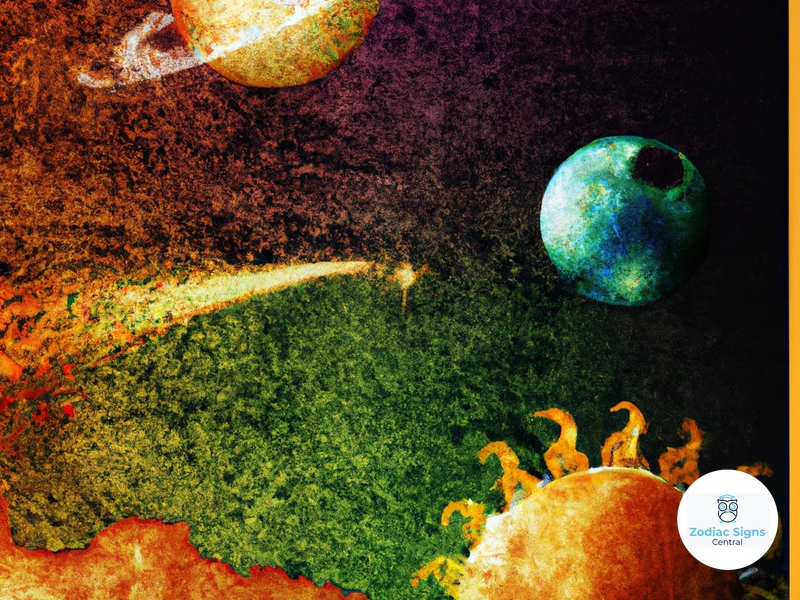
Planetary aspects play a crucial role in shaping our career choices and professional inclinations. The alignment and interactions between planets in our birth chart can provide insights into our natural talents, vocational preferences, and potential success in various fields.
For instance, a strong aspect between the Sun and Mercury can indicate a natural affinity for communication and intellectual pursuits. Individuals with this aspect may excel in careers that involve writing, public speaking, teaching, or any field that requires effective communication skills. They have the ability to articulate their thoughts and ideas with confidence, making them great candidates for careers in journalism, marketing, or public relations.
On the other hand, a harmonious aspect between Mars and Uranus might suggest a passion for innovation and a desire for independence. These individuals thrive in dynamic and unconventional work environments and may be drawn to careers in technology, entrepreneurship, or scientific research, where they can apply their innovative thinking and make groundbreaking contributions.
Additionally, the aspect between Venus and Jupiter can signify a natural aptitude for creativity, aesthetics, and a love for beauty. Individuals with this aspect may find fulfillment in artistic or design-oriented careers, such as fashion, interior design, photography, or music. They appreciate the finer things in life and can excel in roles that involve promoting harmony and bringing joy to others.
It’s important to note that planetary aspects are not solely determinative of one’s career path. They are indicative of potential strengths and inclinations, but other factors such as personal interests, education, and life experiences also come into play. The overall configuration of the birth chart and the positions of specific planets in different houses can provide a more comprehensive understanding of career prospects.
By analyzing the planetary aspects in your birth chart and considering their implications, you can gain valuable insights into your career choices and find alignment between your natural inclinations and professional pursuits. Understanding how different planetary energies influence your vocational preferences can lead to a more fulfilling and successful career journey.
Planetary Aspects in Transit Charts
Planetary aspects in transit charts play a crucial role in understanding the current energetic influences and potential events that may occur in a person’s life. A transit chart is created by comparing the current positions of the planets to the natal chart. These transits can reveal how the planetary energies are interacting with the individual’s natal planets and aspects, providing insights into the themes and experiences that may arise during a specific period.
When analyzing planetary aspects in transit charts, it’s important to focus on the aspects that the transiting planets form with the natal planets. For example, if transiting Venus forms a trine aspect with the natal Mars, it suggests a harmonious and flowing expression of passion, desire, and creativity. This transit may bring pleasant encounters in relationships, increased social activities, and a boost in self-confidence.
On the other hand, challenging aspects between transiting and natal planets, such as a square or opposition, can signify potential obstacles, conflicts, or intense experiences. For instance, if transiting Saturn forms a square aspect with the natal Sun, it may indicate a period of hard work, responsibilities, and obstacles that test one’s determination and authority.
Transits also involve the movement of the outer planets, which have longer orbits and therefore create long-lasting and transformative influences. For example, the transit of Pluto over important points in the natal chart can bring about profound shifts, personal empowerment, and deep psychological transformations.
Interpreting planetary aspects in transit charts requires a careful analysis of the individual’s unique natal chart and the current transiting positions. It is essential to consider the planetary aspects individually and collectively to get a holistic understanding of the potential energies at play during a specific period.
By understanding and tracking planetary aspects in transit charts, individuals gain valuable insights into the opportunities, challenges, and overall energetic climate they may encounter. This knowledge empowers them to make informed decisions, utilize the available energies to their advantage, and navigate through life’s ups and downs with greater awareness and resilience.
Challenges and Opportunities Revealed by Planetary Aspects
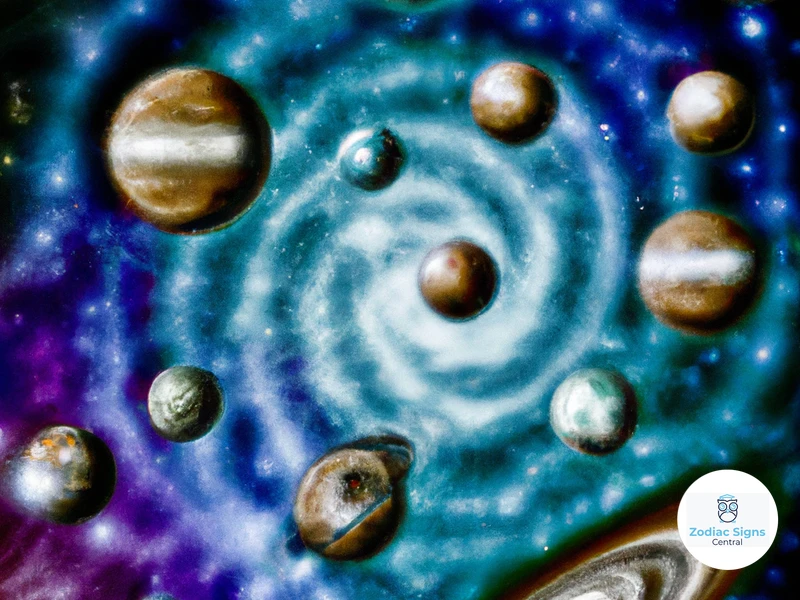
Challenges and opportunities are inherent in the planetary aspects present in an astrological chart. These aspects shed light on various areas of life and provide valuable insights into the hurdles and advantages one may encounter.
1. Difficulties:
– Square aspects often bring challenges and obstacles. They create a tension between the energies of the planets involved, which can lead to a sense of frustration or conflict. However, these challenges also present opportunities for growth and transformation, as they push individuals to overcome obstacles and develop inner strength.
– Opposition aspects may bring opposing forces into play, creating a sense of duality or inner struggle. These aspects often manifest as external conflicts or internal contradictions that need to be resolved to find balance.
2. Transformative Opportunities:
– Trine aspects bestow ease and harmony, providing individuals with innate talents and abilities. These aspects present opportunities for natural flow and positive outcomes in the areas influenced by the planets involved. They indicate areas of life where individuals can excel effortlessly.
– Sextile aspects bring opportunities for growth, creativity, and positive change. They facilitate the harmonious blending of energies, allowing individuals to make the most of favorable circumstances and create meaningful connections.
3. Adjustments:
– Quincunx aspects require adjustments and adaptations. They unveil areas of life where a subtle realignment or change of approach may be necessary for optimal outcomes. While these aspects can create initial discomfort, embracing the need for adaptation can lead to personal growth and a greater sense of harmony.
Understanding the challenges and opportunities revealed by planetary aspects empowers individuals to navigate their life paths with greater awareness. By recognizing potential obstacles, one can prepare strategies to overcome them and make the most of the opportunities presented by favorable aspects. Astrology provides a roadmap to self-discovery, enabling individuals to embrace challenges, seize opportunities, and thrive in various aspects of life.
Working with a Professional Astrologer
Working with a professional astrologer can be a transformative and enlightening experience. These skilled practitioners are well-versed in the intricacies of astrology and can provide invaluable guidance and insights based on your astrological chart. Here are a few reasons why working with a professional astrologer can enhance your understanding of planetary aspects:
1. Expertise and Experience:
– Professional astrologers have dedicated years of study and practice to gain in-depth knowledge of astrology.
– They are trained to decipher the complexities of planetary aspects and can provide accurate and detailed interpretations.
2. Personalized Interpretations:
– Astrologers can offer personalized interpretations of your chart, tailoring their insights to your specific circumstances and concerns.
– They can help you understand how the planetary aspects in your chart interact and influence various aspects of your life.
3. Guidance and Clarity:
– Professional astrologers can guide you through your astrological journey, offering clarity and perspective on the challenges and opportunities revealed by your planetary aspects.
– They can help you navigate important life decisions, relationships, and career choices by providing insights into the potential outcomes and influences of your planetary aspects.
4. Uncovering Hidden Potential:
– An astrologer can shed light on your hidden strengths and talents that may be indicated by specific planetary aspects.
– They can help you harness these qualities and make the most of the opportunities presented by your chart.
5. Timing and Transits:
– Professional astrologers are skilled in analyzing planetary transits and can help you understand the current and upcoming influences on your chart.
– They can provide guidance on how to navigate through challenging periods and make the most of favorable ones.
Working with a professional astrologer can provide you with a deeper understanding of your planetary aspects and their impact on your life. Their expertise and guidance can empower you to make informed decisions, embrace your true potential, and navigate life’s challenges with confidence. Whether you seek clarity in relationships, career choices, or personal growth, an astrologer can offer valuable insights and support on your astrological journey.
Conclusion

In conclusion, decoding planetary aspects in your astrological chart is a fascinating and illuminating journey. These celestial connections provide valuable insights into your personality traits, relationships, and career choices. By understanding the different types of planetary aspects and interpreting their meanings, you can gain a deeper understanding of yourself and the opportunities and challenges that lie ahead. Whether you’re exploring major or minor aspects, or examining aspect patterns in your chart, the knowledge gained from decoding planetary aspects can help you navigate through life with clarity and purpose. It’s important to remember that while planetary aspects offer valuable insights, they do not determine your fate. They serve as tools to help you make informed choices and embrace the opportunities and challenges presented to you. Consider working with a professional astrologer who can provide further guidance and support in understanding and interpreting your unique planetary aspects. By harnessing the power of planetary aspects, you can unlock your true potential, align with your cosmic blueprint, and lead a fulfilling and meaningful life.
Frequently Asked Questions
1. What role do planetary aspects play in astrology?
Planetary aspects play a crucial role in astrology as they illustrate the dynamic relationships between different celestial bodies in an individual’s chart. These aspects provide insights into personality traits, potential challenges, and opportunities for growth.
2. Can planetary aspects change over time?
No, planetary aspects in an individual’s birth chart remain the same throughout their lifetime. However, as the planets continue to move in the sky, new planetary aspects called “transits” form and influence the individual’s experiences.
3. Are there ‘positive’ and ‘negative’ aspects in astrology?
While some aspects are traditionally considered “positive” or “challenging,” it’s important to remember that all aspects serve a purpose in shaping our experiences and growth. What may be perceived as challenging can also provide valuable lessons and opportunities for personal development.
4. How can I interpret multiple planetary aspects in my chart?
Interpreting multiple planetary aspects can be complex. It’s best to analyze each aspect individually and then look for patterns and connections between them. Consulting with a professional astrologer can provide deeper insights and guidance.
5. Do planetary aspects influence compatibility in relationships?
Yes, planetary aspects can influence compatibility in relationships. Positive aspects can foster harmony and understanding, while challenging aspects may require extra effort to overcome conflicts. However, it is essential to consider the entire chart and not solely rely on one aspect for assessing compatibility.
6. Can I change or overcome negative planetary aspects in my chart?
While you cannot change the aspects in your birth chart, understanding them can help you navigate their energies more consciously. By recognizing potential challenges, you can develop strategies to mitigate their impact and focus on personal growth and transformation.
7. What are aspect patterns in astrology?
Aspect patterns refer to specific configurations formed by multiple planetary aspects in an individual’s chart. Examples include grand trine, T-square, and yod. These patterns add an extra layer of meaning and complexity to the interpretation of the chart.
8. Do all planetary aspects have the same level of intensity?
No, not all planetary aspects have the same level of intensity. The nature of the planets involved, their positions, and the aspects formed determine the strength and influence of the aspect. Some aspects may have a more significant impact than others.
9. Can planetary aspects indicate career aptitudes and choices?
Yes, certain planetary aspects can provide insights into an individual’s career aptitudes and choices. For example, aspects involving the Sun, Moon, and the Midheaven can shed light on an individual’s potential career paths and areas of professional fulfillment.
10. How can I use planetary aspects in transit charts?
In transit charts, planetary aspects reveal the current relationships between the moving planets and the natal planets. By analyzing these aspects, you can understand the energies and themes that are likely to manifest in your life during specific periods, allowing you to make informed decisions and navigate life’s ups and downs.
References
Frequently Asked Questions
1. Can planetary aspects in my astrological chart change over time?
Yes, planetary aspects in your astrological chart can change over time as the planets continue to move and form new alignments. This is why it’s important to regularly update and analyze your chart to gain a deeper understanding of the current energetic influences in your life.
2. What role do major planetary aspects play in astrology?
Major planetary aspects, such as conjunctions, oppositions, and squares, have a significant impact on your personality traits, strengths, challenges, and life experiences. These aspects create powerful energetic dynamics that shape your individual journey and can provide valuable insights into your life’s purpose.
3. How does one interpret minor planetary aspects?
Minor planetary aspects, such as sextiles and quincunxes, are considered to be more subtle influences in astrology. They can indicate hidden talents, potential areas of growth, and opportunities for personal development. While they may not be as dominant as major aspects, they still contribute to the overall energetic pattern of your chart.
4. What are aspect patterns in astrological charts?
Aspect patterns refer to the unique combinations of multiple aspects in your astrological chart. These patterns, such as grand trines or T-squares, create additional layers of meaning and complexity in your chart interpretation. They offer deeper insights into your personality, strengths, and challenges, and can provide guidance on how to navigate various areas of your life.
5. How can I decode planetary aspects in my own astrological chart?
To decode the planetary aspects in your astrological chart, start by identifying the aspects present and their specific meanings. Take note of any major aspect patterns and their significance. Then, analyze how these aspects interact with the planets and houses to gain a comprehensive understanding of their influence on different areas of your life.
6. What tips can help me analyze planetary aspects effectively?
When analyzing planetary aspects, it’s important to consider the energies involved, as well as the specific planets and houses they affect. Pay attention to any patterns or themes that emerge, and make connections between the aspects and your personal experiences. Additionally, seek guidance from trusted astrological resources or consult with a professional astrologer for a more in-depth analysis.
7. What are some common planetary aspect combinations and their meanings?
Common planetary aspect combinations include the Sun-Moon conjunction, Mars-Saturn opposition, and Jupiter-Pluto square. These combinations bring unique dynamics and can significantly influence your personality traits, emotional expression, and life challenges. Understanding the meanings of these combinations can provide valuable insights into your overall astrological profile.
8. How do planetary aspects impact personality traits?
Planetary aspects play a crucial role in shaping personality traits. They can enhance certain characteristics, highlight strengths, and trigger challenges or conflicts within individuals. For example, a harmonious aspect like a trine may enhance creativity and cooperation, while a challenging aspect like a square may create tension and drive for achievement.
9. What role do planetary aspects play in relationships?
Planetary aspects have a profound impact on relationships. They can reveal compatibility, dynamic patterns, and potential areas of strength or conflict between individuals. Understanding the aspects in your chart and the chart of your partner or loved ones can help you navigate and nurture healthy and fulfilling relationships.
10. How can planetary aspects influence career choices?
Planetary aspects can influence career choices by highlighting specific talents, interests, and potential paths for success. For example, a strong conjunction between Mercury and Venus may indicate a natural inclination towards communication and artistic pursuits, while a challenging aspect between Mars and Saturn may suggest a need for discipline and structure in career endeavors.
References
- How To Read Your Birth Chart – Planets, Houses …
- Planetary Aspects List; Astrology Aspects Meaning …

